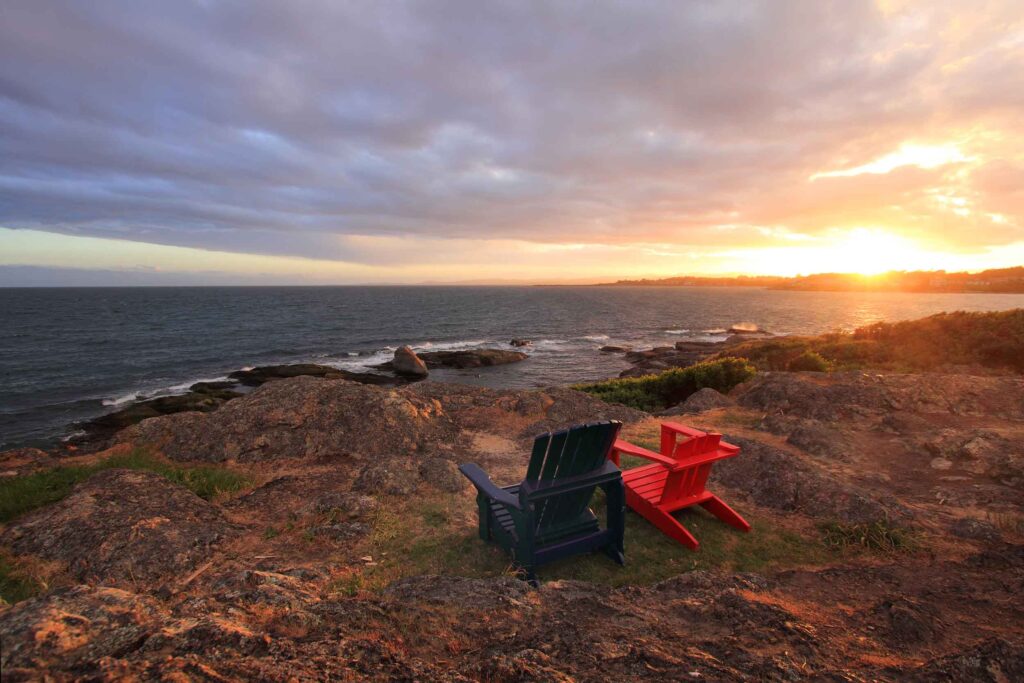In his tenth year working with the Mt. Waddington Regional District (MWRD), Patrick Donaghy has seen the region’s recycling program evolve over the years. Recently we interviewed Patrick to learn more about his program, and how it has changed since the roll out of MMBC’s residential packaging and printed paper recycling program in 2014.
Many British Columbians have never heard of Mount Waddington. Can you paint us a picture of where it is and what communities you serve?

Our regional district includes communities on both Vancouver Island and the mainland. It’s a very large geographical area, with a population of about 12,000 people. Most of our population resides on Vancouver Island, in Port McNeill, Port Hardy, and Port Alice, in Alert Bay, and on adjoining islands. A small percentage of our population lives on the mainland, in communities that are only accessible by boat. A significant portion of our residents are members of the Namgis, Quatsino, Kwakiutl and Gwa’sala-‘Nakwaxda’xw First Nations.
Did you have recycling service prior to joining MMBC?
Yes, but it was a patchwork of small programs that were heavily reliant on volunteers. We were very exposed to commodity markets, and we had redundancy and inefficiencies between our various programs.
You decided to join MMBC when the program first launched in May 2014. How has this changed recycling in Mt. Waddington Regional District?
It was a game changer. Collection has always been local and remains local today. The Regional District’s role is to coordinate between the municipalities to find efficiencies, help with communication, and to provide centralized coordination and processing. MMBC really helped to strengthen our efforts.
Can you give us an example of the types of improvements you been able to implement as a result of the financial incentive you receive through the MMBC program?
 Prior to joining MMBC, only two communities in the MWRD had curbside service and, given our remote location, it was very difficult and expensive to transport materials to a broker in the Lower Mainland. The financing we receive from MMBC has helped to offset our costs and strengthen operations. We moved from curbside being provided to a small minority to a significant majority. This is a big change from two years ago. We are now providing bi-weekly curbside service to nearly two-thirds of residents in MWRD, including Port McNeill and Port Hardy. Even our smaller, remote communities have depot service.
Prior to joining MMBC, only two communities in the MWRD had curbside service and, given our remote location, it was very difficult and expensive to transport materials to a broker in the Lower Mainland. The financing we receive from MMBC has helped to offset our costs and strengthen operations. We moved from curbside being provided to a small minority to a significant majority. This is a big change from two years ago. We are now providing bi-weekly curbside service to nearly two-thirds of residents in MWRD, including Port McNeill and Port Hardy. Even our smaller, remote communities have depot service.
What are the challenges your program faces?
Our remote location is a challenge. Many communities are water access only – some have ferry services, but many don’t. But this challenge is also a source of strength. Our residents don’t take their recycling services for granted, and really appreciate what they have. I think this means that they take their duty to recycle, and to learn about how to recycle, more seriously than they might otherwise.
Another challenge is that there is additional administration required that we have had to adapt to: audits, tracking and documentation, and reporting, for example. We didn’t have to do this in the past, so that has been an adjustment for us. On the other hand, we understand the benefit – in terms of accountability and transparency that was not there in the past. The MMBC annual report is an excellent example of that. It instilled great confidence that our extra efforts were of value, and would allow for tracking the program’s success with real data.
Was it difficult for residents to learn what is accepted under the MMBC program?
No, I don’t think it was. Residents are grateful for the ability to recycle new materials (foam packaging, glass, plastic bags and overwrap) and, because curbside was new for most people, the learning curve for what can and can’t be recycled wasn’t as steep as it might have been for communities that had to change what they had been doing for so many years.
Can you think of any best practices that other communities or collectors might benefit from?
 When our program launched, we decided to label our recycling containers with a summary of what is accepted at the curb, and what items would need to go to depot. We used adhesive labels so they can be easily changed if the material list changes at some point in the future. We also hand delivered each bin and handed off the bin in person, whenever possible, to the resident; this enabled us to have a conversation with each resident and personally deliver the literature. We put a lot of effort into roll out and training at the outset of the program, and it really paid off. This was made possible by our contractor, Fox Disposal. They invested a lot of time and lent people to aid with bin and calendar distribution. They were also very diligent about learning and abiding by the accepted materials list, investing extended hours at the program’s launch to ensure a high-level of attention could be paid to the materials collected.
When our program launched, we decided to label our recycling containers with a summary of what is accepted at the curb, and what items would need to go to depot. We used adhesive labels so they can be easily changed if the material list changes at some point in the future. We also hand delivered each bin and handed off the bin in person, whenever possible, to the resident; this enabled us to have a conversation with each resident and personally deliver the literature. We put a lot of effort into roll out and training at the outset of the program, and it really paid off. This was made possible by our contractor, Fox Disposal. They invested a lot of time and lent people to aid with bin and calendar distribution. They were also very diligent about learning and abiding by the accepted materials list, investing extended hours at the program’s launch to ensure a high-level of attention could be paid to the materials collected.
You said your roll-out, communication and training efforts really paid off – can you point to specific results that demonstrate the pay off?
Our contamination rate is very low. MMBC’s audit report showed 2.3% contamination, but my guess is that on a regular basis we are below 1%, and we are very proud of that.
How else do you keep contamination low?
For curbside, we don’t have automated trucks, so this means that Fox Disposal’s collection staff can check the materials as they are being loaded. In addition, municipal depot staff at 7 Mile Recycling Centre are very knowledgeable and enthusiastic. They help greatly with keeping excluded materials out of our stream.
What has been your biggest success?
There are two successes I would highlight. First, growing curbside from a service provided to a small minority of our population to a significant majority. Second, we have been able to bring depot service to smaller communities and – as a result of MMBC helping to offset our costs – these communities now have garbage and recycling solid waste programs for the first time.
Thank you Patrick for helping us learn more about your program. Stay tuned for more collector profiles.




